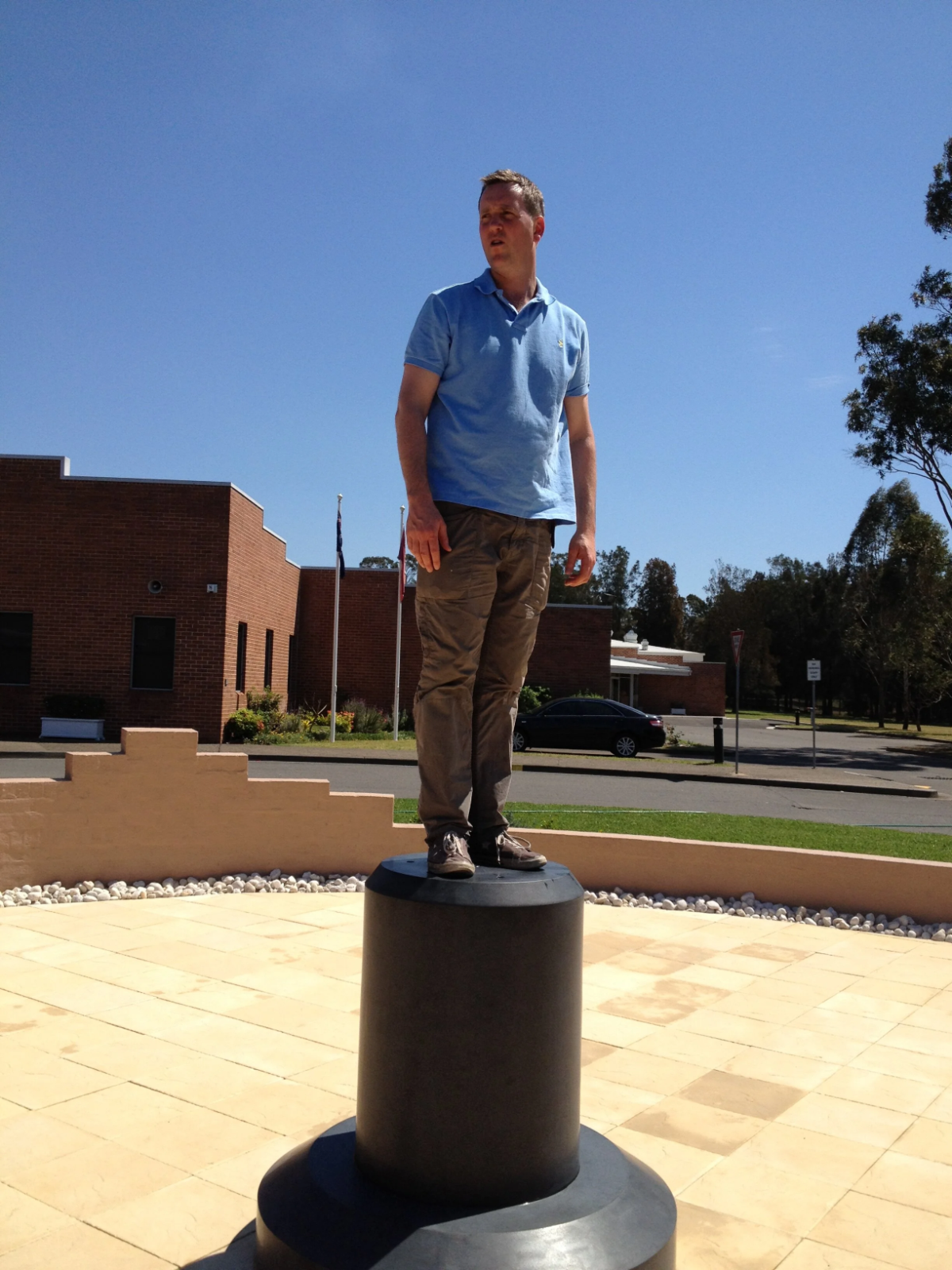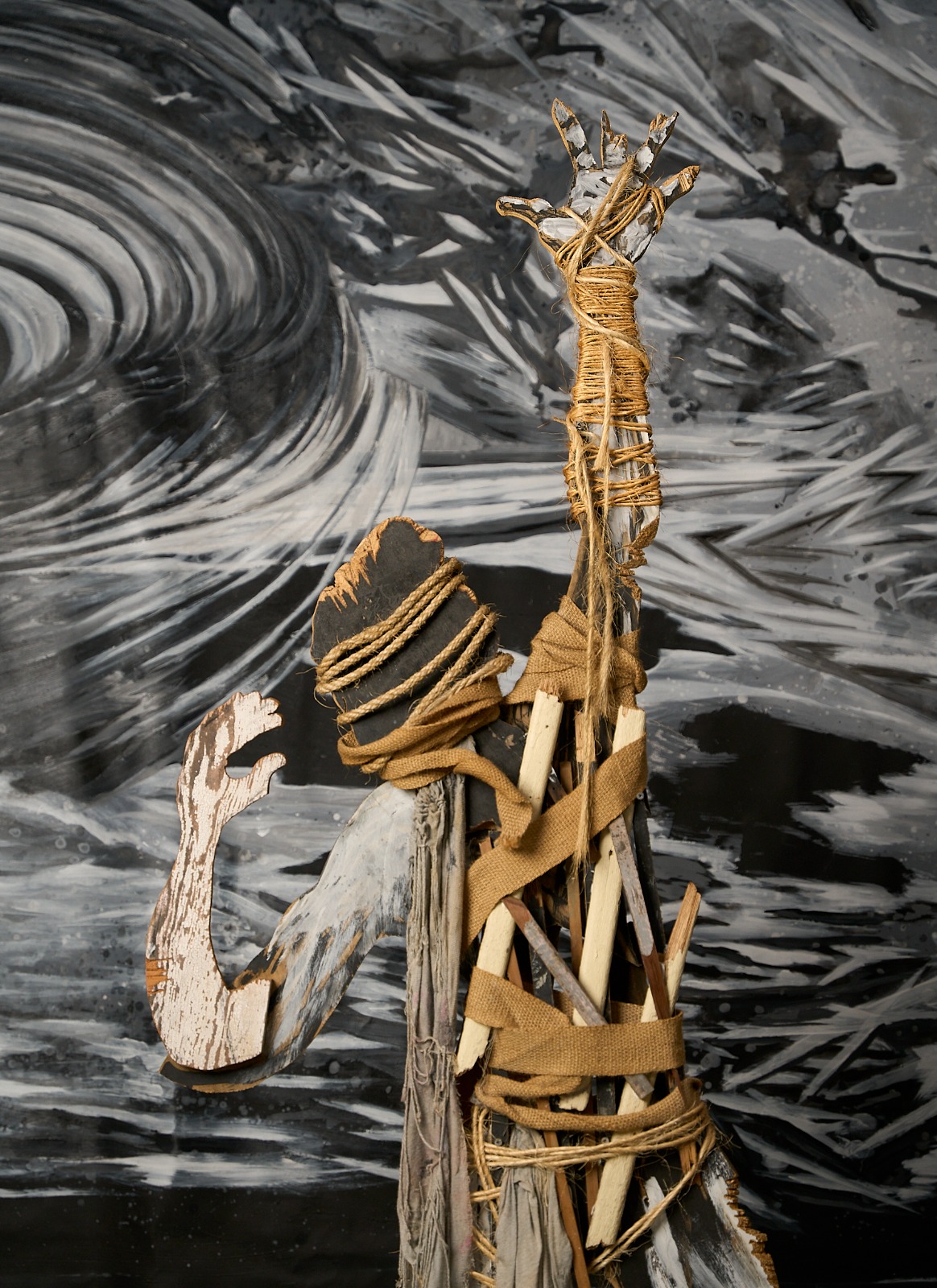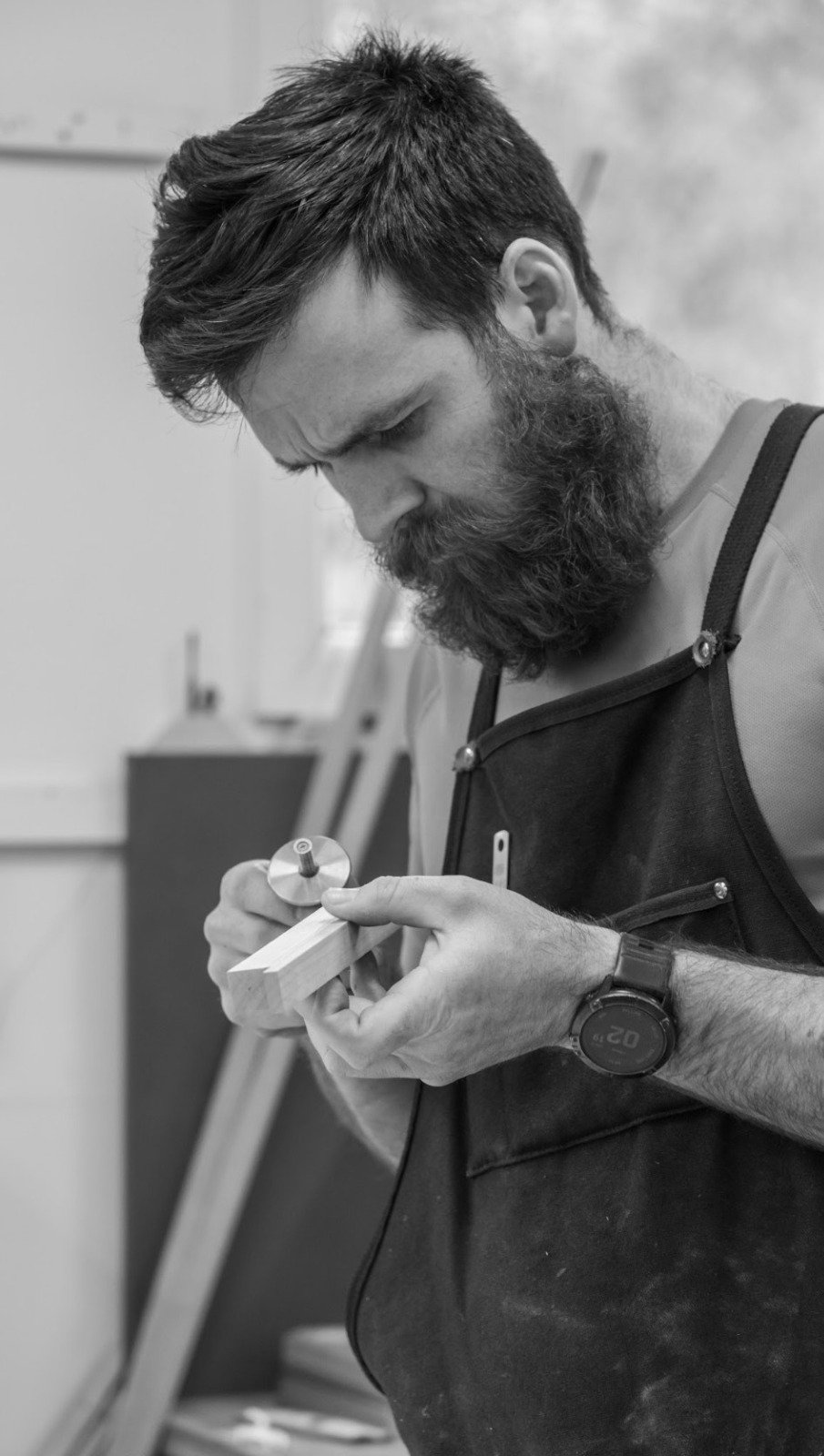|
The Art of an Old Ignatian
Tuesday, 14 October 2025
|
|
This month, the OIU turns its focus to the Artists & Sculptors Industry, celebrating Old Ignatians whose creative paths have taken them from the classroom to the studio, the foundry, and the workshop. From the enduring weight of bronze to the delicate grain of handcrafted timber, these artists are shaping Australia's cultural landscape with imagination, purpose, and skill. We meet Daniel Dominguez (OR1989), a civic sculptor whose figurative bronzes capture both history and humanity; Doug Heslop (OR1993), a contemporary artist whose bold, reflective works challenge society and provoke thought; and Joshua Donald (OR2011), a designer and craftsman creating bespoke timber furniture that unites beauty and function. Together, their stories reveal how creativity, craftsmanship, and conscience — nurtured at Riverview — continue to guide their art and outlook. Daniel Dominguez 1. Tell us a bit about your current role and the part of the Artists & Sculptors Industry you're in. I'm a generic old school sculptor, the guy that puts statues in parks and bronze busts in parlours. Working in this tradition would best be categorised as a civic sculpture, i.e. a sculpture created for public commissions rather than private galleries. That said, I do a fair bit of commissioned work for private buyers, normally in the form of portrait sculptures (i.e. busts). I have been doing this now for 30 years. 2. What do you find most exciting (or challenging) about working in this industry right now? The art scene hasn't really changed much since I started in this game in the 1990s. Bronze figurative sculpture was pretty much ignored by the art world then. It seems to be ignored just as much today. The good thing is that more people are now talking about public bronze sculptures, the bad thing is that it's because they are invariably tearing them down. As the old men are brought down, however, there does seem to be an increased demand for female subjects, which can only be a good thing. What I find exciting about this industry is that I still feel figurative sculpture is the major general of the art world - the heavy cavalry of the avant-garde. What I find challenging is that the art industry does not care much for major generals. 3. How has the industry evolved since you started your career? Any trends you're watching closely? Portrait sculpture is almost unheard of as an art form in this country. With little discernment from the public and the artworld for what is good and bad. Most people judge a work on whether it's realistic rather than any abstract appreciation of a sculpture's inherent value. The constant use of the term "statues" rather than "sculptures" is a sad indication of this. That being said, there is a growing interest in the UK and the US in portrait and figurative sculpture, with collectives of fine sculptors appearing on the horizon. There is also, most importantly, a growing interest and love of sculpture that seems to be coming from the younger generation. Also, in art education teachers are encouraging students to learn to draw (or maybe it's the students that are asking). 4. How did your time at Riverview shape your career or outlook? I loved the Jesuits. Fr Walsh was my House master and tutor. Dressed in long flowing black robes, he seemed to float down the halls, followed by a cloud of cigarette smoke. As he stood against the stark light of day like a gothic gargoyle or a Giacometti bronze, you had the feeling, talking with him, that you were on the edge of something much greater, like a Casper Friedrich painting. Nearing the end of my student days at Riverview, Fr Walsh took me outside to see the Wallace Wing and pointed out the Tom Bass sculpture that was hanging in the wall. Who would have thought at the time, Tom Bass would end up becoming my great hero and mentor. Fr Walsh later told me that it was my job as a sculptor to show people the face of Christ. He also told Chris Hallet that he had had a dream that he had got all the people in the school to gather in the Wallace wing, then he had pushed it into the Lane Cove River. 5. If you could sit down for dinner with any person, past or present, who would it be – and why? Maybe the artist Lloyd Rees. Lloyd was a local guy (he and his friends set up the Northwood School - Australia's Post Impressionist movement). This guy painted all his life until he went blind. Then he kept painting. Tom Bass reckoned his blurred paintings at the end were like looking through the gates of Heaven. I also kind of like that he was a local. He made me feel that growing up around the Lane Cove River was a spectacular place. https://www.youtube.com/watch?v=CziTtYDLF7U Daniel Dominguez, OR1989, Southwell House  Doug Heslop (OR1993) 1. Tell us a bit about your current role and the part of the Artists & Sculptors Industry you're in. I'm a contemporary artist who works between societal critique and abstraction. I've been making a series of work on dehumanisation in relation to the Gaza genocide for the past 2+ years. It flows on from a series I made about my pioneering, town founding uncle. I've just curated an exhibition, 'A Kind of Resistance' for the University gallery, Newcastle, which is receiving excellent critical acclaim, and I have a show in November where I'm collaborating with an Australian Palestinian Christian friend, Jamie Bastioli, alongside Conversations for Palestine. 2. What do you find most exciting (or challenging) about working in this industry right now? The most exciting thing in the art world right now is great independent artists making heroic work. That's incredible, and it's how it has to be. If you wait around for the industry to okay it, you'll be dead, and the idea will be stale before they even comprehend it. 3. How has the industry evolved since you started your career? Any trends you're watching closely? Trends come and go. The best is to cut your own path. It takes longer but gradually people realise you are a visionary and not a sheep. 4. How did your time at Riverview shape your career or outlook? In my time, the school did not really view art as a career, and I had no idea about what it would look like. I tried a few things to appease my parents, then thought I've wasted enough time, I'll go to art school. To become an artist at that time was like closing a door on Riverview. I literally knew no one from school who had gone on to become an artist - it was not encouraged. However, my outlook on the world is extremely Ignatian, big picture thinking. That's a secret strength. To join dots that seem somehow obvious, it's maybe a deeper way to understand and challenge the world. 5. If you could sit down for dinner with any person, past or present, who would it be – and why? I think it's hard to go past great authors. Barbara Kingsolver understands the plight of humanity and has an incredibly compassionate heart. Arundhati Roy would be exquisite. If I was choosing for delightful company, these amazing story tellers would be my choice. Robert Hughes, Australia's greatest Art critic, a Riverview old boy who loved art and disliked school as much as I did, would be my standby, if they were unavailable. insta: mirrored_vacuum Doug Heslop, OR1993 Boarder, Owen House First image: A Kind of Resistance, Sculptural and painting installation, 400H x 7000cmW x 6000cmD, currently showing at University Gallery, Newcastle Last Image: Dance of Souls, installation view 450cm H x 360w x 140cm D.  Joshua Donald (OR2011) 1. Tell us a bit about your current role and the part of the Artists & Sculptors Industry you're in. I've recently started a new role with BA Furniture, a small studio that creates bespoke, handcrafted timber pieces. Working closely with the team, we design and build furniture that's both functional and artistic, tailored to each client's space. My favourite part of the job is problem-solving - figuring out how to turn a creative idea into something tangible, beautiful, and well-made. Every day brings new challenges in design, technique, and craftsmanship, which keeps the work exciting and rewarding. 2. What do you find most exciting (or challenging) about working in this industry right now? Having completed my formal training at Sturt School for Wood last year, my biggest challenge has been adapting to the pace of professional workshop life. At Sturt, projects could evolve slowly - I had time to think, refine, and perfect every setup. In a small business, there's still an expectation of high quality, but it must be balanced with time efficiency and client deadlines. Learning to maintain craftsmanship under pressure has been both demanding and motivating. 3. How has the industry evolved since you started your career? Any trends you're watching closely? Although I'm only at the beginning of my career, I've noticed a growing appreciation for craftsmanship and sustainability. People are moving away from mass-produced, disposable furniture and seeking pieces that last — items with a story, made by hand, and built to endure. It's exciting to see this shift toward valuing the handmade, and to be part of a new generation of makers contributing to that change. 4. How did your time at Riverview shape your career or outlook? Woodwork was my favourite and best subject at Riverview. I always intended to pursue it after school but initially followed other paths. A few years ago, I began carving spoons as wedding gifts, which reignited the spark that began in Riverview's workshop. Instagram: @donaldbydesign J oshua Donald, OR2011, Ricci House  Next Industry Focus: Performing Musicians From local gigs to national tours, debut albums to long-time classics — we're shining a light on Old Ignatians making music and taking it to the stage. Whether you're launching a new record, hitting the road for a run of shows, or still loving the local pub circuit, we'd love to hear your story. If you're an Old Ignatian — new or experienced — performing, recording, or producing music, please get in touch at news@oiu.org.au to be part of our Performing Musicians feature in the next OIU Newsletter. |
